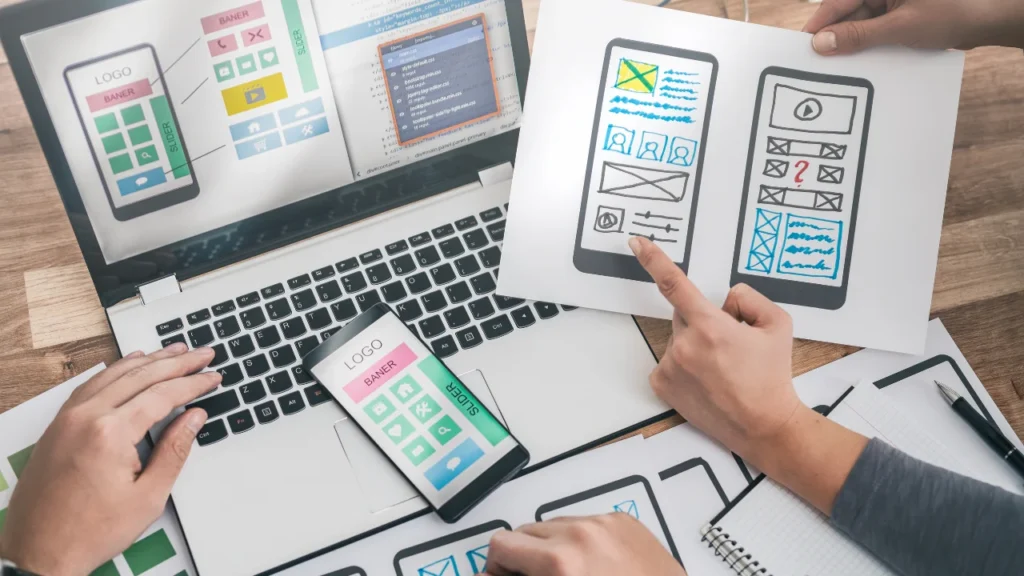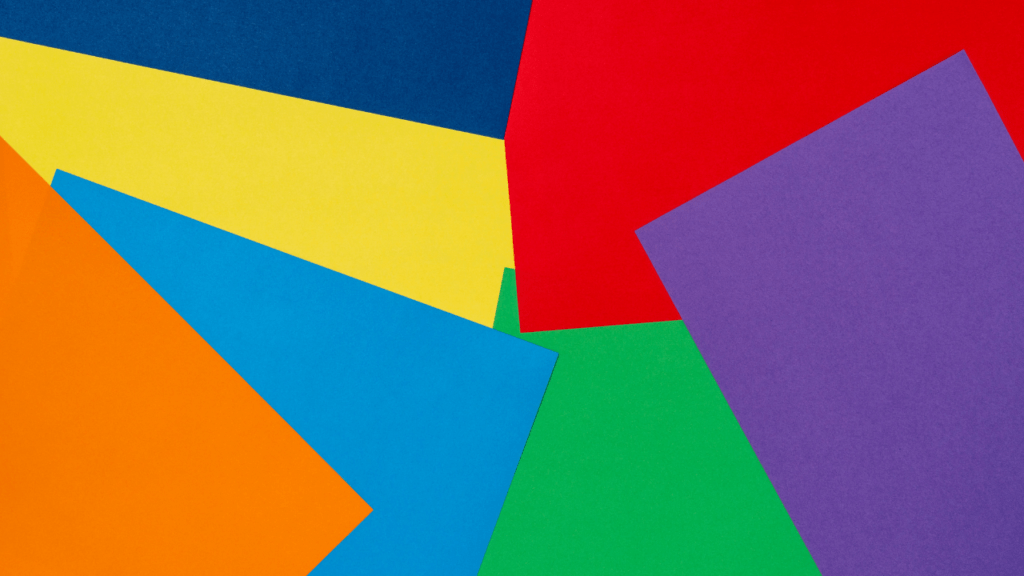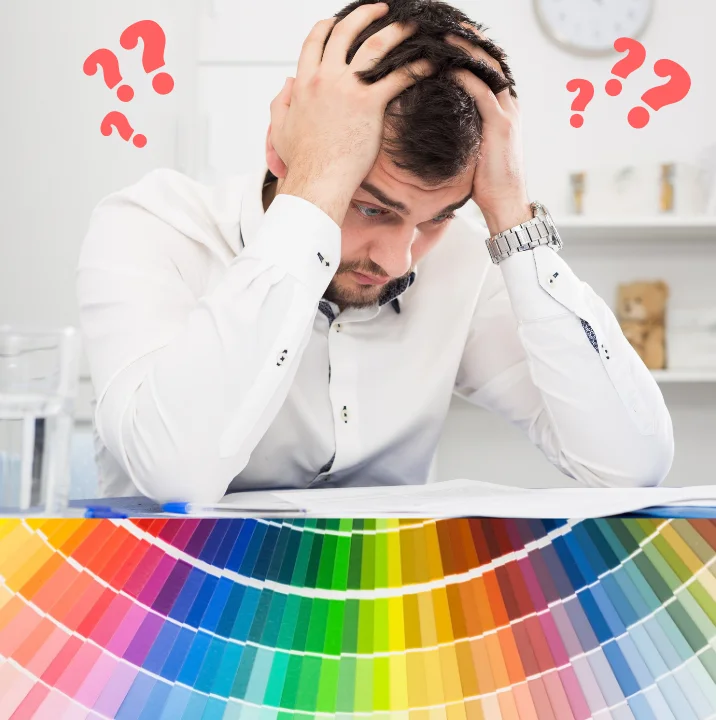Introduction to Color Trends in Web Design

The Importance of Color in User Experience
Color significantly impacts the user experience (UX), serving as a tool for communication, mood setting, and influencing decision-making. As we step into 2024, the strategic use of color will be crucial in web design. The appropriate use of color can not only enhance user engagement but also improve usability and strengthen brand identity. You can checkout the Color Library !
How Color Trends Evolve in Web Design
Color trends in the digital design world are influenced by broader cultural trends, including shifts in fashion, art, and consumer preferences. As brands strive to stand out and emotionally connect with their audiences, it becomes essential for web designers to keep up with these evolving trends.
Top 10 Color Trends in Web Design for 2024

1- Vibrant and Bold Colors
Bright Blues and Purples
These colors are expected to dominate web design in 2024, bringing a sense of creativity and visionary thinking. Bright blues and purples are particularly appealing for technology and innovative brands that aim to make a strong and impactful statement.
Vivid Reds and Oranges
Energizing and eye-catching, reds and oranges are perfect for grabbing attention and encouraging user actions, such as clicks and submissions. These colors work well for call-to-action buttons and promotional graphics.
2- Pastel and Soothing Shades
Gentle Pinks and Soft Greens
These colors offer a soothing palette that is ideal for industries focused on health and wellness. The calming effect of gentle pinks and soft greens helps create a serene online environment, conducive to relaxation and peace.
Light Blues and Muted Yellows
Invoking freshness and cheerfulness, light blues and muted yellows are excellent for websites aimed at children and educational platforms, providing a friendly and welcoming feel.
3- Deep and Dark Tones
Rich Greens and Majestic Blues
These deep tones suggest professionalism and trust, making them a popular choice for corporate and financial websites looking to project stability and confidence.
Dark Grays and Blacks
Sophisticated and modern, dark grays and blacks are often used in luxury and high-end fashion websites, where they contribute to a sleek and elegant aesthetic.
4- Neon and Electric Hues
Flashy Neons for Accents
Neons are making a comeback, particularly for accentuating key elements on a page. Their bright, luminous qualities make them ideal for highlighting important information or features on creative and youthful websites.
Electric Blues and Greens
Electric shades are excellent for interactive elements, such as buttons or links, where they can enhance user interaction through visual stimulation.
5- Earthy and Natural Colors
Warm Browns and Greens
Emphasizing sustainability and nature, earthy tones like browns and greens are becoming more popular, reflecting a growing trend towards eco-friendly designs and brands.
Desert Oranges and Sandy Tans
These warm hues evoke a sense of adventure and exploration, making them suitable for travel and lifestyle websites that aim to inspire discovery and excitement.
How These Colors Enhance Web User Experience

Emotional Impact of Color Choices
The psychological impact of colors can be profound, affecting how users feel and behave on a website. For example, blue can invoke a sense of calm and reliability, while red might trigger excitement or urgency, influencing user actions and reactions.
Color Accessibility in Web Design
Ensuring that websites are accessible to all users, including those with visual impairments, is a critical aspect of web design. Implementing high-contrast color schemes and testing for color blindness compatibility are essential steps in creating an inclusive digital environment.
Implementing Color Trends in Various Web Design Elements
Backgrounds and Overlays
Using color trends effectively in backgrounds and overlays can create an appealing and cohesive look that enhances the user’s visual experience.
Typography and Buttons
Colors can make text and buttons stand out, guiding the user’s navigation and improving the functionality and aesthetics of a website.
Icons and Infographics
Applying trendy colors to icons and infographics can help these visual elements pop, making them more noticeable and enhancing the overall user interface.
Case Studies: Successful Use of Color Trends
E-commerce Websites
Effective use of color in e-commerce can guide visitors through the purchasing process, from attraction to conversion.

Tech Startups
Tech startups often employ bold and vibrant colors to reflect innovation and attract a younger demographic.

Future of Color in Web Design Beyond 2024
Predictive Trends and Emerging Technologies
Looking ahead, color trends in web design are likely to continue evolving with new technologies and user preferences, influencing how colors are used in digital spaces.
Sustainable and Eco-Friendly Color Choices
As sustainability becomes increasingly important, colors that are associated with nature and those that consume less power will gain popularity.
Conclusion
Recap of the Top 10 Color Trends
The color trends for 2024 offer a dynamic toolkit for enhancing web design and user experience. From vibrant and bold to soft and natural, these trends provide options to cater to various design needs and user preferences.
Final Thoughts on the Power of Color in Web Design
Color remains a powerful element in web design, capable of transforming how users perceive and interact with digital content. By keeping up-to-date with color trends, designers can continue to create compelling and effective websites.
What makes a color trend popular in web design?
A color trend becomes popular in web design when it resonates with current cultural sentiments, technological advancements, and consumer behavior. Popular color trends often reflect broader societal trends, such as sustainability or digital modernism, and are picked up by influential designers and brands. Once these colors are showcased in high-visibility projects, they start to gain traction among a wider array of designers who incorporate them into various digital products, making the trend more mainstream.
How can web designers stay updated with color trends?
Web designers can stay updated with color trends by following industry leaders, subscribing to design publications, and attending design conferences. Websites like Behance and Dribbble, along with design magazines such as “Web Designer” and “Smashing Magazine,” regularly feature articles on the latest trends. Social media platforms, especially Pinterest and Instagram, are also valuable resources where designers share and discuss contemporary trends. Additionally, tools like Adobe Color and Pantone Color Institute provide insights into trending colors.
What are the risks of following color trends too closely?
Following color trends too closely can lead to a lack of originality and differentiation from competitors. If every designer adopts the same trending colors, it can make web designs across different brands look similar, reducing a brand’s unique appeal and recognition. Moreover, relying heavily on trends can make a website look outdated quickly as trends evolve, necessitating more frequent updates and redesigns, which can be costly and time-consuming.
How does color psychology affect web design?
Color psychology plays a crucial role in web design as colors have the power to influence mood, behavior, and perceptions. Each color can evoke different emotions and reactions; for example, blue often instills a sense of trust and security, while yellow can invoke feelings of happiness and energy. Web designers use these psychological effects to evoke specific emotions in the audience, encouraging them to stay on the page longer or take specific actions like subscribing or purchasing.
Can color trends influence brand identity?
Yes, color trends can significantly influence brand identity. The colors a brand uses are closely tied to how it is perceived by consumers. For instance, using eco-friendly colors like green and brown can align a brand with sustainability, while vibrant and bold colors might position a brand as energetic and youthful. Adapting to color trends can help brands stay relevant and appealing to their target audience, but it’s essential to consider long-term brand consistency as well.
How to choose the right color trend for your website?
Choosing the right color trend for your website involves understanding your brand identity, audience preferences, and the psychological impact of colors. Start by analyzing the message and emotions your brand aims to convey, then select color trends that align with these elements. Additionally, consider the cultural context of your target audience as colors can have different meanings in different cultures. Testing different colors with A/B tests can also provide insights into what works best for engaging your audience and achieving your website’s goals.


